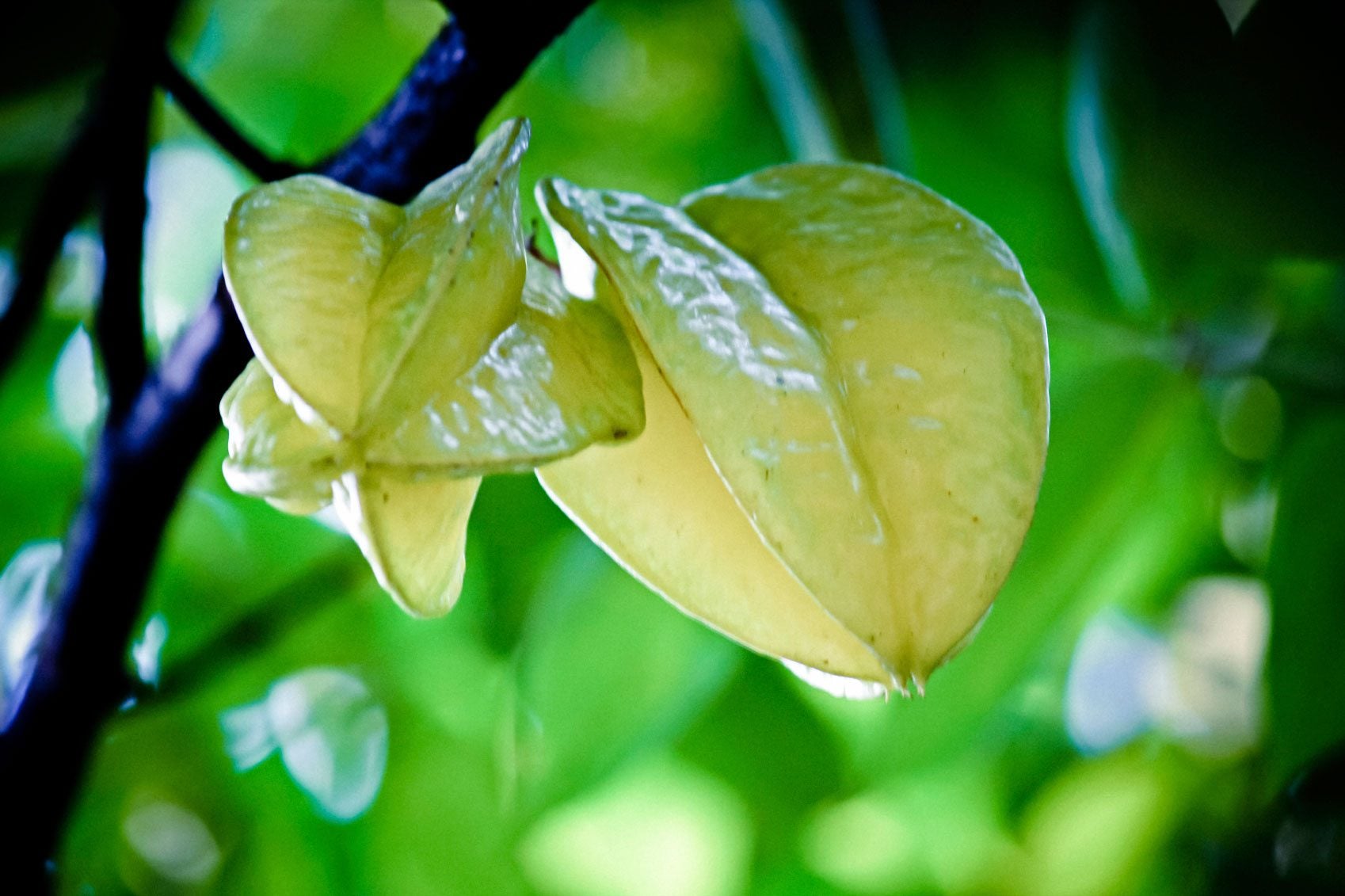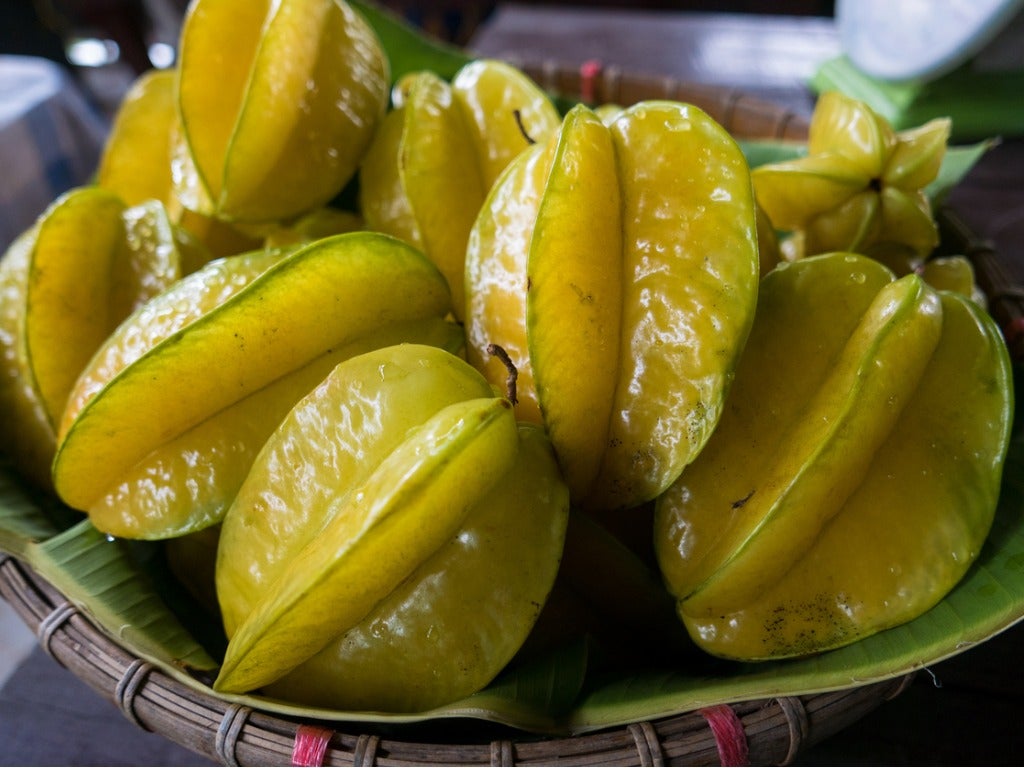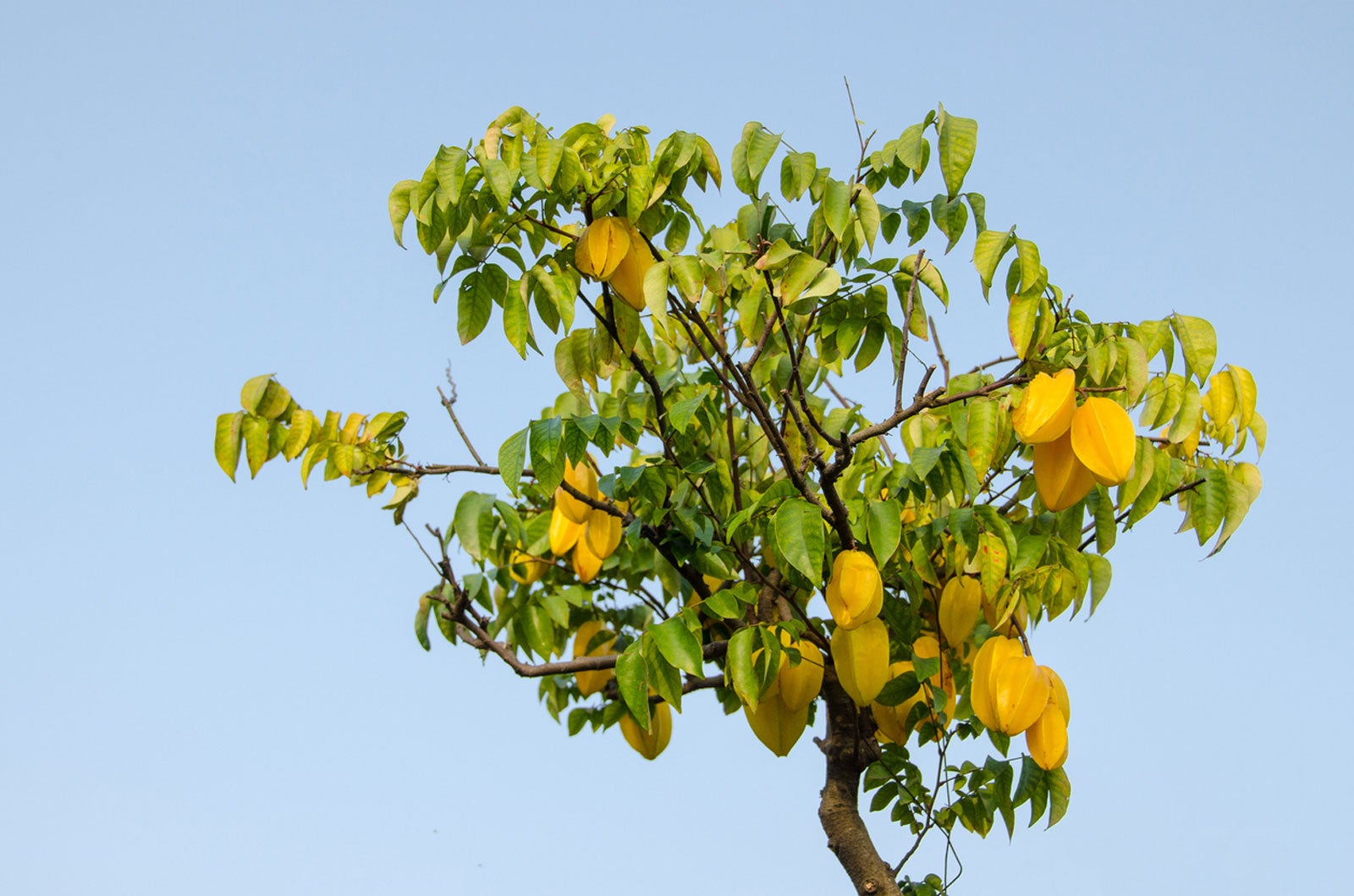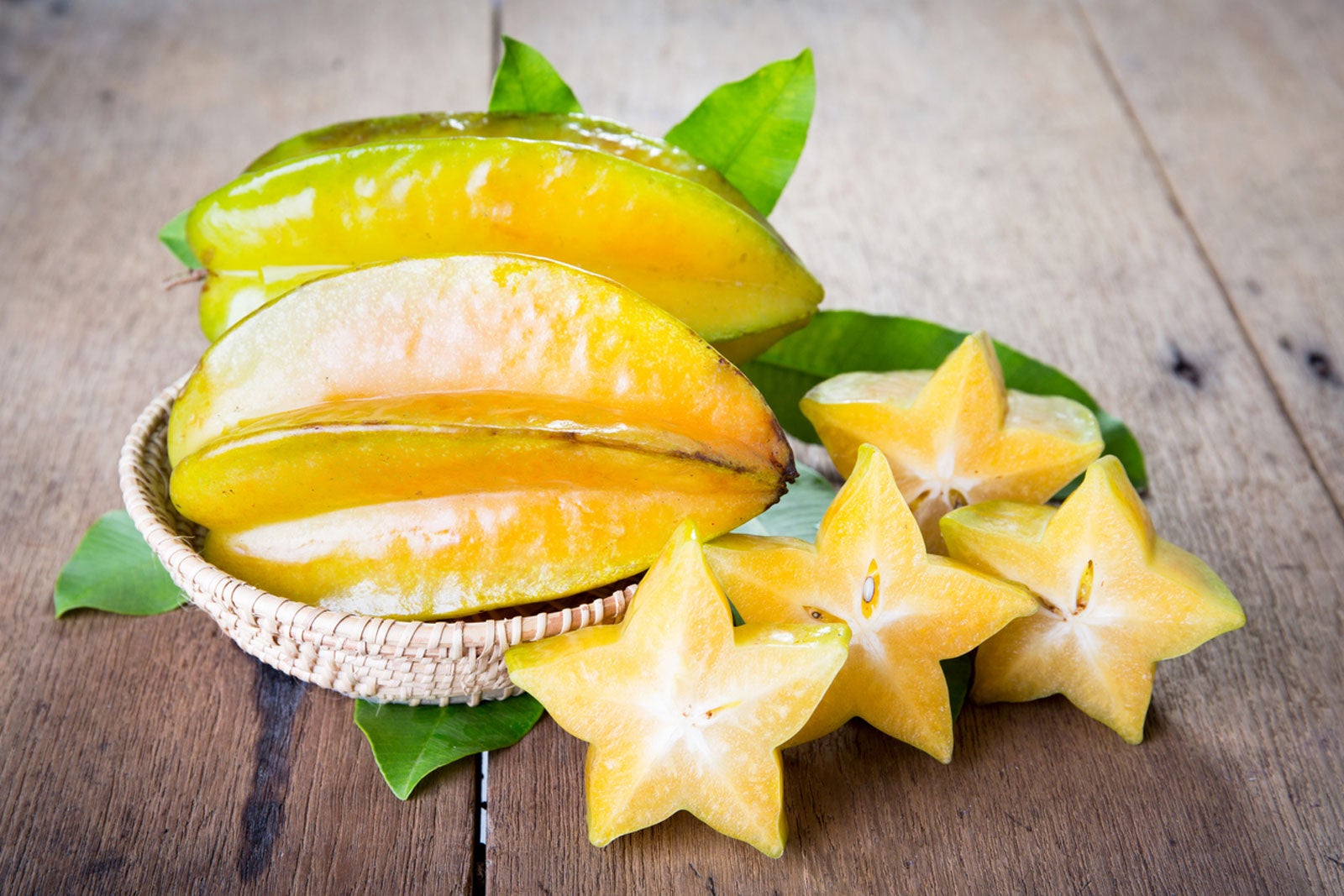Container Grown Starfruit: How To Grow Starfruit In Pots

You may be familiar with starfruit (Averrhoa carambola). The fruit from this subtropical tree has not only a delicious tangy flavor reminiscent of an apple, grape, and citrus combination, but is truly star shaped and, thus, unique among its exotic tropical fruit brethren. Starfruit tree care, as you may have guessed, requires warm temperatures. The question is, lacking a warm climate, is it possible to cultivate container grown starfruit? Read on to learn more.
Starfruit Tree Care
Starfruit trees bear yellow fruit, about ¾-inch (2 cm.) long with very waxy skin and five severe ridges. When the fruit is cut crosswise, a resulting perfect five-point star is in evidence. As mentioned above, starfruit trees are native to the subtropics, specifically Sri Lanka and the Moluccas with cultivation evident in southeast Asia and Malaysia for hundreds of years. This fruiting tree in the family Oxalis has minimal hardiness but will survive very light frost and temps into the upper 20's for brief periods of time. Carambolas can also be damaged by floods and hot, dry winds. Starfruit trees are slow, short trunked growers with lovely, bushy, evergreen foliage. This foliage, composed of alternating oblong shaped leaves, is light sensitive and tends to fold in upon itself at dusk. In ideal conditions, trees may grow to 25 to 30 feet (8-9 m.) by 20 to 25 feet (6-8 m.) across. The tree blooms a few times a year in optimal conditions, bearing clusters of blossoms in pink to lavender hues. All of these qualities make growing starfruit in containers ideal. They can be situated in the sunroom or greenhouse during fall and winter in northern climates and then moved to an exterior patio or deck during the temperate months. Otherwise, if you are in a mild temperate zone, the plant may be left out year-round, provided it is in a protected area and can be moved if a temperature dip is expected. Low temps may cause leaf drop, sometimes in the entirety, but the tree usually recovers when temperatures warm. Now the question is, “How to grow starfruit in pots?”
How to Grow Starfruit in Pots
First off when contemplating growing starfruit in containers, for optimal results, this tree needs high temps, at least 60 degrees F. (15 C.) for flowering and successive fruit set. Given consistent temps and sun, the tree will flower throughout the year. There are a variety of cultivars available, but two of them seem to do the best when grown in containers. ‘Maher Dwarf' and ‘Dwarf Hawaiian' will both fruit and flower for many years in 10 inch (25 cm.) pots.
- ‘Maher Dwarf' bares small to medium sized fruit on a 3 foot (1 m.) tall tree.
- ‘Dwarf Hawaiian' has a sweeter, larger fruit but bares fewer than the preceding.
Potted starfruits are not too picky when it comes to the soil they are grown in although, that said, the tree will grow more quickly and bear more heavily in rich loam that is moderately acidic (pH 5.5-6.5). Do not overwater, as the tree is sensitive, but its root system is resistant to many of the root diseases that afflict other potted fruit trees. Carambolas prefer full sun but will tolerate partial sun. Container grown starfruit trees should have an application of balanced fertilizer in the spring through the fall. Slow release or organic granular fertilizers are recommended and can be applied every few months. Starfruit trees may show signs of iron chlorosis during the winter, which appears as interveinal yellowing on young foliage. Treat the tree with chelated iron in the form of foliar spray or, if warm weather is nigh, wait for a bit and symptoms will often clear up. Relatively pest free, starfruit trees will often begin blooming right away when only a foot and half tall (37 cm.) and you may even get a few fruits. The flowers emerge off older wood and, as such, allows for pruning and shaping that will not retard fruit production. For the dwarf varieties recommended for container gardening above, prune back the out reaching branches in the late winter prior to spring growth spurts.
Gardening tips, videos, info and more delivered right to your inbox!
Sign up for the Gardening Know How newsletter today and receive a free copy of our e-book "How to Grow Delicious Tomatoes".

Amy Grant has been gardening for 30 years and writing for 15. A professional chef and caterer, Amy's area of expertise is culinary gardening.
-
 Moody Blooms For Spring: 8 Types Of Black Flowers To Add Drama To Spring Displays
Moody Blooms For Spring: 8 Types Of Black Flowers To Add Drama To Spring DisplaysFrom midnight burgundies to inky violets, several types of black flowers can enrich and embolden a spring display. Try these brooding bloomers for a moody garden
By Tonya Barnett
-
 Can Snake Plants Live Outside? Everything You Need To Know For Snake Plants Al Fresco
Can Snake Plants Live Outside? Everything You Need To Know For Snake Plants Al FrescoSnake plants can live outside given the right conditions, but be careful that they don't take over! Learn the best way to use snake plants in your landscape.
By Mary Ellen Ellis
-
 Harvesting Starfruit: How And When To Pick Starfruit
Harvesting Starfruit: How And When To Pick StarfruitAnyone lucky enough to be growing this plant may be wondering how to harvest starfruit once mature. This article can help with that.
By Laura Miller
-
 Propagating Starfruit Trees: Tips For Growing A New Starfruit Tree
Propagating Starfruit Trees: Tips For Growing A New Starfruit TreeStarfruit trees are subtropical plants hardy in USDA zones 10 through 12, but don't worry if you live in an area that receives frost. You can still use methods of starfruit propagation to grow this amazing fruit as a container plant. Click this article for more information.
By Laura Miller
-
 Interesting Starfruit Uses – Learn How To Use Starfruit
Interesting Starfruit Uses – Learn How To Use StarfruitIf you think starfruit uses are limited to decorative garnishes for fruit salads or fancy arrangements, you might be missing out on a great tasting food with multiple health benefits. Starfruit is rich in antioxidants, vitamins, and minerals. Learn how to use them here.
By Laura Miller
-
 Starfruit Tree Growing – How To Plant A Starfruit Tree
Starfruit Tree Growing – How To Plant A Starfruit TreeInterested in growing an exotic fruit tree? Try growing Carambola starfruit trees. This fruit is sweet, yet acidic, and native to Southeast Asia. For more information about the Carambola starfruit tree, click the following article.
By Amy Grant